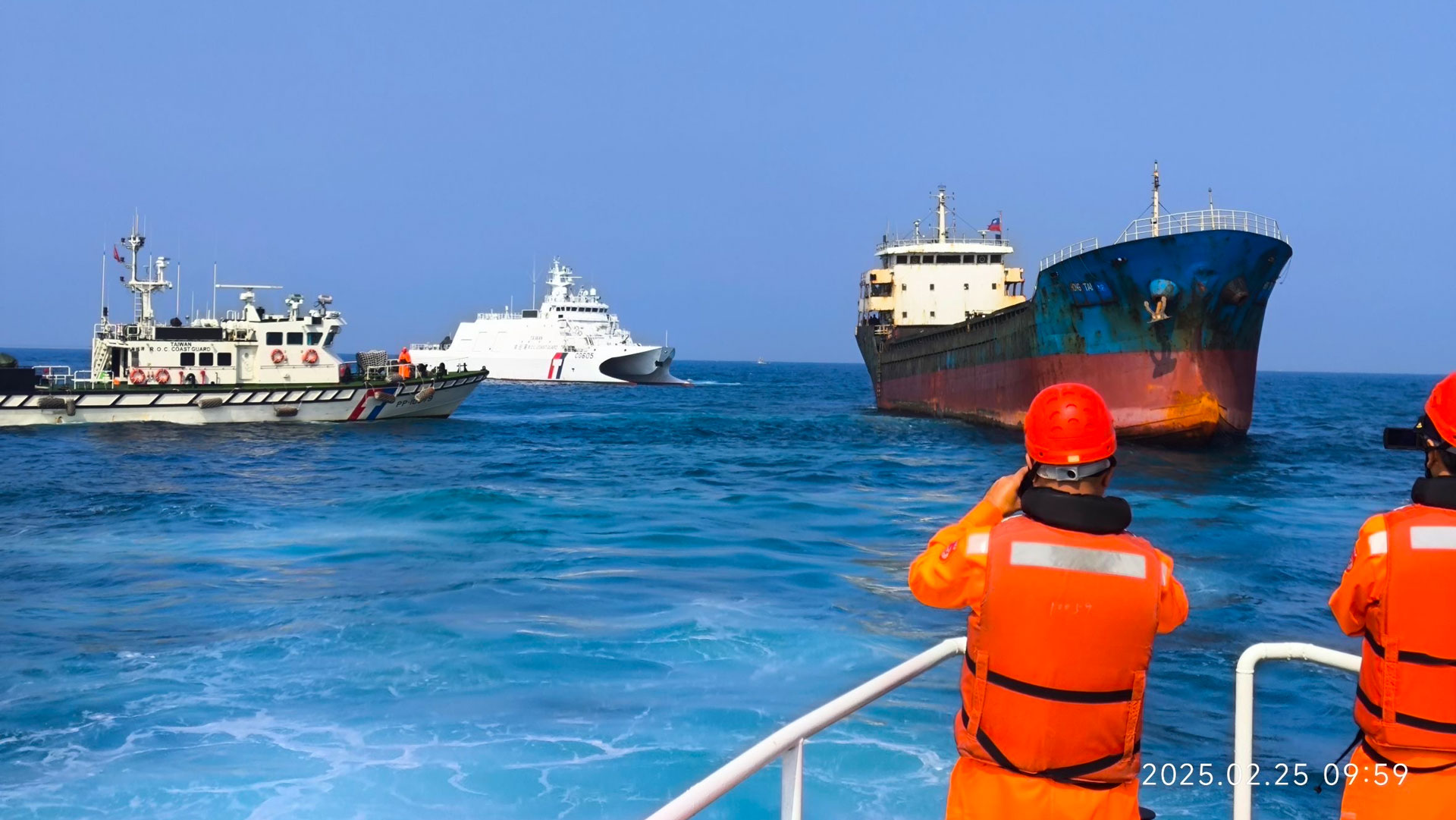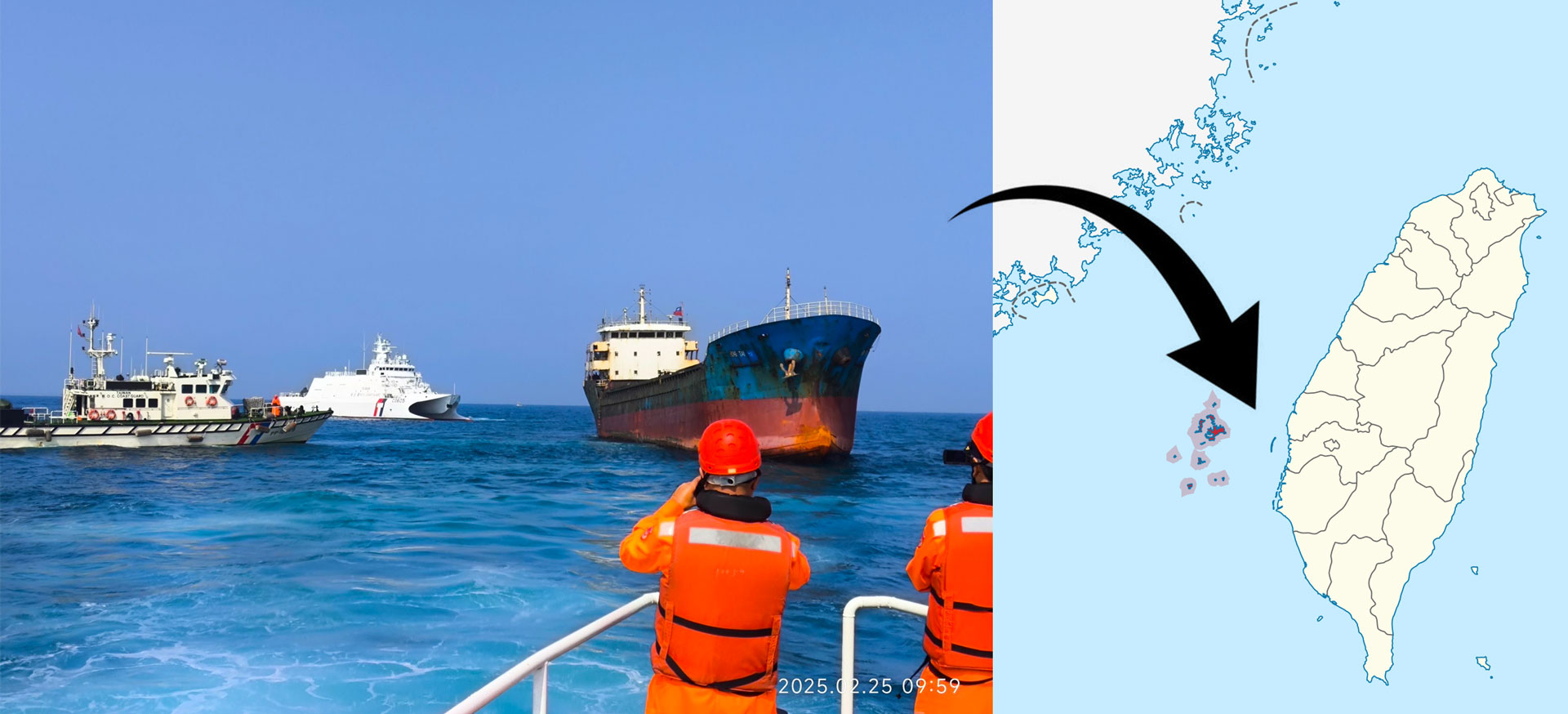Taiwanese authorities detain fishy Chinese freighter suspected of cutting undersea Internet cable
Suspicious 'Hong Tai' freighter had been lurking in the area since Saturday.

An undersea Internet cable running between Taiwan's main island and the offshore Penghu Islands was severed earlier today, CNA reports. The affected telecom company was quick to reassure that "backup cables and microwave technologies" would mean no disruption — but the bigger story is the boarding and seizure of a Togo-registered ship and its eight Chinese crew suspected of sabotaging the cabling.
Taiwan's Coast Guard Administration (CGA) has monitored the Hong Tai freighter's movements in the area since Saturday, Feb. 22, according to a machine translation of the Chinese language news article. Subsequently, Taiwan Coast Guard vessel PP-10079 approached the freighter at 2:30 a.m. Feb. 25 and issued broadcasts requesting it leave.
The suspiciously stationed freighter seemed stuck for some reason but started moving at 3:08 a.m., according to the CGA. It stopped and restarted at 3:24 a.m., heading Northwest. Meanwhile, Taiwan's Chungwha Telecom contacted the coast guard about a damaged undersea cable suspected of being caused by 'external force.'
The above seems to show quick communications between the separate agencies. Thus, the coast guard vessel quickly closed in on the Hong Tai and was taken back to Anping Port on the main island of Taiwan by 12.15 p.m.
Moving on to details about the ship and crew, local media says that the seized vessel was registered in Togo, but all eight crew detained were Chinese citizens. The coast guard wasn't definitive about the cable damage being inflicted on purpose. It says that further investigations will be conducted into the matter.
Representatives of Taiwan's current government don't seem to want to sit on the fence, though. CNA quotes Presidential Office Spokesperson Lii Wen (李問) as saying, "Taiwan must continue to strengthen the protection of submarine cables and the resilience of communications."
Lii pointed the finger at the Chinese Communist Party and described the protection of these kinds of cables as "a national security issue."
Get Tom's Hardware's best news and in-depth reviews, straight to your inbox.
Chinese naval saber-rattling around the Taiwanese island isn't new, but if Lii is correct, it seems to have added actual physical infrastructure damage to its menacing behavior. The communists may have been inspired and emboldened by Russia's similar skulduggery and 'plausible deniability' related to cable-cutting incidents in the Baltic and other seas around Europe.

Mark Tyson is a news editor at Tom's Hardware. He enjoys covering the full breadth of PC tech; from business and semiconductor design to products approaching the edge of reason.
-
bit_user IMO, they need some sort of active defense. Like some sort of submersible that can attach floats to an anchor that's being dragged, so that it lifts up off the seabed. Station a few of those near important infrastructure corridors and, when a ship starts navigating in a suspicious way, deploy that thing to check for an anchor drag and intervene.Reply
It seems like you could also use areal drones to visually check whether ships have their anchors deployed. If they do, another option might be to fly out there in a helicopter and raid the bridge with a SWAT team. -
DougMcC Replybit_user said:IMO, they need some sort of active defense. Like some sort of submersible that can attach floats to an anchor that's being dragged, so that it lifts up off the seabed. Station a few of those near important infrastructure corridors and, when a ship starts navigating in a suspicious way, deploy that thing to check for an anchor drag and intervene.
It seems like you could also use areal drones to visually check whether ships have their anchors deployed. If they do, another option might be to fly out there in a helicopter and raid the bridge with a SWAT team.
If you can do all that, may as well just trench the cables so anchor dragging wont grab them. -
bit_user Reply
I think it's apples & oranges - one capability doesn't imply the other.DougMcC said:If you can do all that, may as well just trench the cables so anchor dragging wont grab them.
More importantly, they have to protect existing infrastructure, now. Redeploying it all in trenches sounds like an expensive and long-term project that does nothing to help them in the short or medium term. -
DougMcC Reply
IMO if you have a submersible that can catch an anchor, you can build a submersible that can trench an existing cable.bit_user said:I think it's apples & oranges - one capability doesn't imply the other.
More importantly, they have to protect existing infrastructure, now. Redeploying it all in trenches sounds like an expensive and long-term project that does nothing to help them in the short or medium term. -
derekullo Probably one of the most if not the most monitored waterway on the planet.Reply
Very ballzy ! -
bit_user Reply
That's not what I said. I said it could attach floats to an anchor. And you only need enough buoyancy to lift it off the sea bed - not all the way to the surface. At those depths, inflating some air bags might do the trick.DougMcC said:IMO if you have a submersible that can catch an anchor,
I'm not saying it'd be easy, given that it has to do that while the ship is moving. It was just a sort of off-the-wall idea. -
DS426 Microwave backup? Those poor birds... lol.Reply
Fiber internet cable cutting is really starting to make the news now. Guess that's good. -
Reply
Not even close. The pressures involved at depth make any such endevour ludicrous as gas bags would rupture (more like explode) in only a few hundred feet or so as the gas expands at decreased depth and pressure.bit_user said:That's not what I said. I said it could attach floats to an anchor. And you only need enough buoyancy to lift it off the sea bed - not all the way to the surface. At those depths, inflating some air bags might do the trick. Keep in mind that pressure increases/decreases at a rate of 44psi per 100 ft depth change for the first 1000 feet or so from the surface.
Off the wall and in the trash bin is where it belongs.bit_user said:I'm not saying it'd be easy, given that it has to do that while the ship is moving. It was just a sort of off-the-wall idea. -
bit_user Reply
BTW, do you know how long these ship anchor chains usually are? I'm just curious what sorts of depths we might be talking about, here.ex_bubblehead said:Not even close. The pressures involved at depth make any such endevour ludicrous as gas bags would rupture (more like explode) in only a few hundred feet or so as the gas expands at decreased depth and pressure.
Thanks for the fact-check. I appreciate you sharing your expertise.ex_bubblehead said:Off the wall and in the trash bin is where it belongs.
